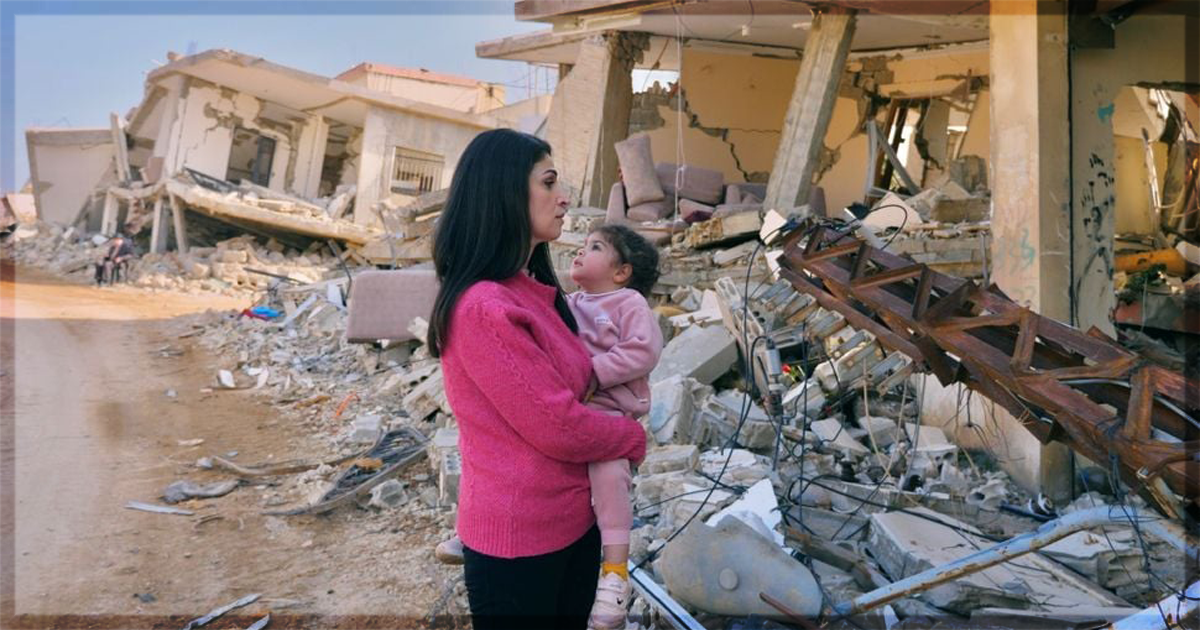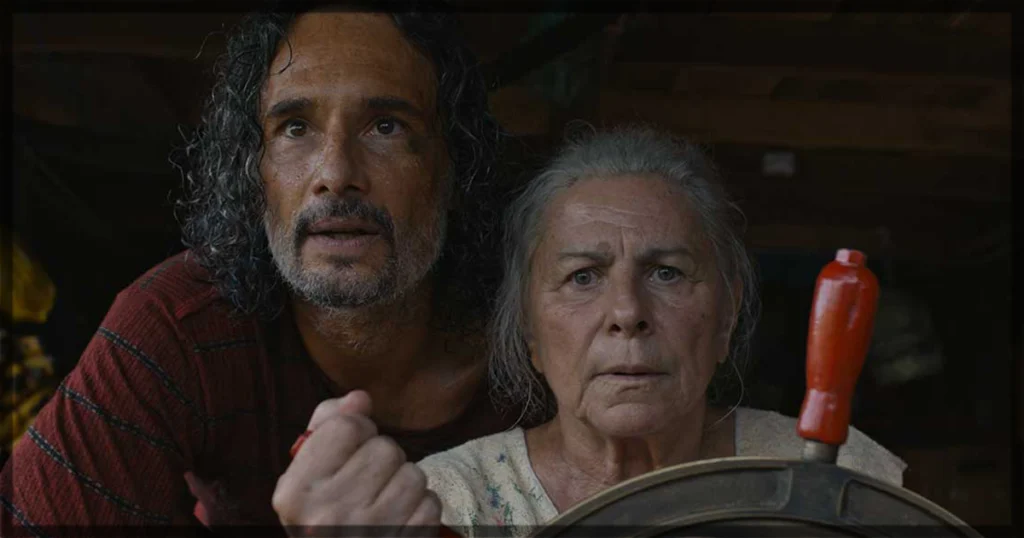The Iraqi-French director Abbas Fahdel is known for studying war and conflicts in the Middle East. His debut feature, Back to Babylon, is a return home after an immense exile, and analyzes the aftermath of the Iran-Iraq and Gulf wars in the country. His most celebrated film, Homeland: Iraq Year Zero, is an almost six-hour chronicling of Iraqi life before and after the U.S. invasion in 2003. Hence, Fahdel is back at portraying the destruction of war, now in his new home, Lebanon. In Tales of the Wounded Land, Abbas, his wife Nour Ballouk, and their daughter Caroline return to their home after sixty days of bombings in their village in Nabatieh, in Southern Lebanon. The film narrates the days after the ceasefire signed in November 2024, when Israel agreed to stop bombing Lebanon to attack Hezbollah, after two intense months of brutal attacks.
In this sense, the celebrated documentary filmmaker depicts the brutalities of Israel beyond the ongoing genocide in Gaza. The country led by Benjamin Netanyahu constantly bombs its neighbours, alleging the organization of cells like Hezbollah in Lebanon or the alleged nuclear program in Iran. Therefore, Bibi and his far-right partners justify the ferocious aggressions in the region through their justification for the Gaza massacre, and a supposed defense of their civilization. Consequently, Fahdel decides on a particular observation of the situation, ranging from a micro to macro analysis, starting from their home, their community, and later, an expanded area of the region. In this sense, the director does not participate in any moment through his camera representation of his observation in the territorial space. He chooses his wife and child as the central characters of this odyssey; both represent two different world views. Caroline, a toddler, watches the world demolition, the one she is aware of. She understands the ludical elements, the bombing sounds as the dangerous implication of an external factor, in this case, the missiles. Nour is the opposite of it; she is the adult conscience of the political effects and the foreseeable consequences of the house destructions to those who have little.
Furthermore, the film is a diary of the material consequences of the Israeli attacks and reckless military strategy against its neighbours. The far-right government justifies aggression against their military enemies, but instead, it affects elders, animals, children, and women -similar targets to the ones in the West Bank. Additionally, the Southern Lebanese region carries the weight of a crucial historical element in human history. Hence, in a conversation in the community, a neighbour tells Abbas and Nour, “I am sure Jesus is Southern Lebanese, he lived around here for a while”. Yet, the attacker widely bombs and destroys millennial sites, farms, stores, and pharmacies. Fahdel captures the aftermath of those raids; he does not show the military wounds, nor the impact on the Hezbollah. He points his cameras at the most affected in this situation: the Lebanese people. Hence, Camile plays with the rumbles in the streets and runs amidst the skeleton of buildings that were homes to thousands in the months prior. It is a childhood in the middle of the constant attacks, including the ones that disrespect the ceasefire agreement, a practice that Israel is known for doing.
The poster for the film is a horse in the middle of a destroyed street in Nabatieh. In mere seconds of footage, Fahdel shows the black horse confused in the ruins of the city avenue. Similar to Camile’s cats, three black ones that the neighbour took care of while the Fahdel–Ballouk were away. The director shows the displacement of people and animals, the lack of infrastructure due to the violent attacks, and the confusing moments after the return for most of them. It is in the silent moments, such as Nour’s cleaning the broken glass of her art gallery, and Camile running with an orange in a yard, that Fahdel screams his disapproval of this violence. It has a poetic nature to the broken situation of humanity, constantly engaging in fatal conflicts, and allowing criminal like the Israeli leaders to continue their violent spiral of power. However, the director repeats himself in a few documentations, bloating an already dense work. Yet, he delivers a final ten-minute sequence that screams to the world; the community buries the bodies of those dead in the raids. Hence, Fahdel does not need to voice-over or place a black screen with information to explain it. In the last sequence, he uses the powerful imagery to contest the violence in Lebanon and reminds us that the world chooses to stay quiet against the aggression of the neighbours by Israel.
Tales of the Wounded Land played at the Locarno Film Festival.
Learn more about the film at the Locarno site for the title.


